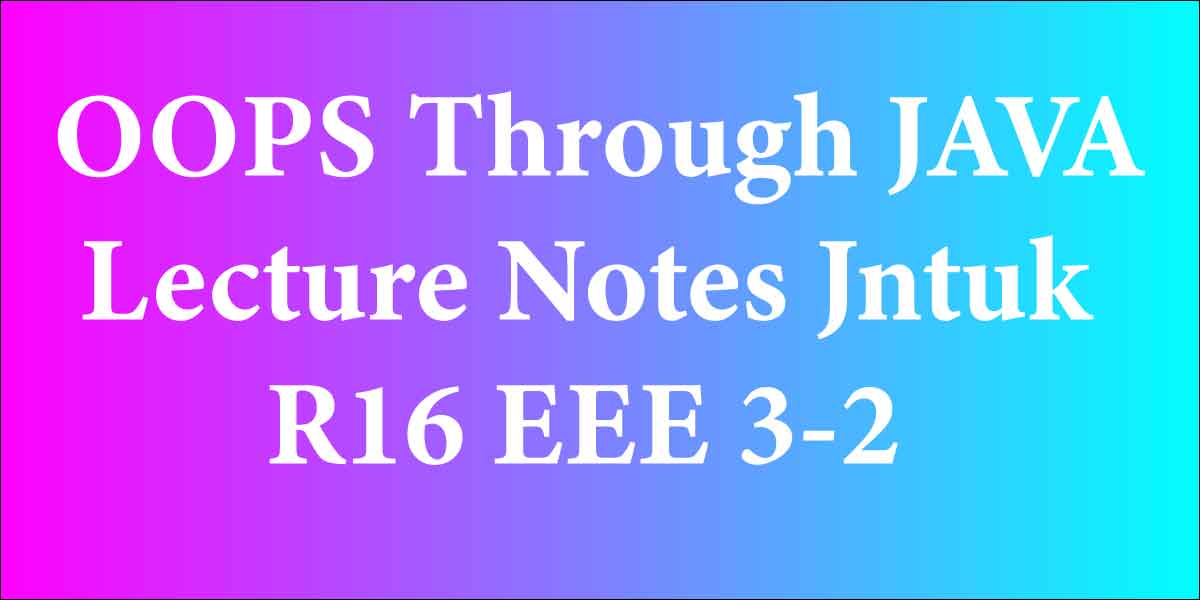OOPS Through JAVA
OBJECTIVES:
• Understanding the OOP’s ideas, categories and objects, threads, files, applets, swings and act.
• This course introduces programing mistreatment the JAVA programing language with object-oriented programming principles.
• stress is placed on event-driven programming strategies, as well as making and manipulating objects, classes, and mistreatment Java for network level programming and middleware development
UNIT-I:
Introduction to OOP, procedural programing language and object familiarised language, principles of OOP, applications of OOP, history of java, java options, JVM, program structure. Variables, primitive knowledge varieties, identifiers, literals, operators, expressions, precedence rules and associativity, primitive sort conversion and casting, flow of management.
UNIT-II:
categories and objects, category declaration, making objects, methods, creators and constructor overloading, garbage man, importance of static keyword and examples, this keyword, arrays, instruction arguments, nested categories.
UNIT-III:
Inheritance, varieties of inheritance, super keyword, final keyword, predominate and abstract category. Interfaces, making the packages, mistreatment packages, importance of CLASSPATH and java.lang package. Exception handling, importance of strive, catch, throw, throws and at last block, userdefined exceptions, Assertions.
UNIT-IV:
Multithreading: introduction, thread life cycle, creation of threads, thread priorities, thread synchronization, communication between threads. Reading knowledge from files and writing knowledge to files, random access file,
UNIT-V:
application category, application structure, application life cycle, sample application programs. Event handling: event delegation model, sources of event, Event Listeners, adapter categories, inner categories.
II Year – II Semester
L T P C
4 0 0 3
UNIT-VI:
AWT: introduction, elements and containers, Button, Label, Checkbox, Radio Buttons, List Boxes, selection Boxes, instrumentation category, Layouts, Menu and Scrollbar.
OUTCOMES:
• perceive Java programming ideas and utilize Java Graphical program in Program writing.
• Write, compile, execute and troubleshoot Java programming for networking ideas.
• Build Java Application for distributed setting. • style and Develop multi-tier applications.
• determine and Analyze Enterprise applications.
TEXT BOOKS:
1. the whole Reference Java, eighth edition, Herbert Schildt, TMH.
2. Programming in JAVA, Sachin Malhotra, SaurabhChoudary, Oxford.
3. Introduction to java programming, seventh edition by Y Daniel Liang, Pearson.
REFERENCE BOOKS:
1. Swing: Introduction, JFrame, JApplet, JPanel, Componets in Swings, Layout Managers in a pair of. Swings, JList and JScrollPane, Split Pane, JTabbedPane, JTree, JTable, Dialog Box.

